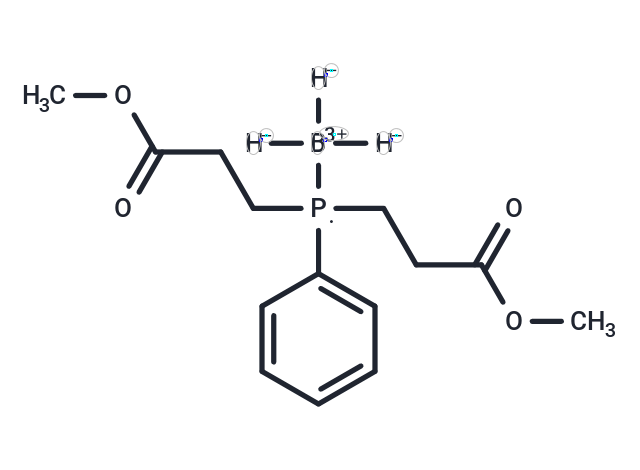Shopping Cart
- Remove All
 Your shopping cart is currently empty
Your shopping cart is currently empty

PB1 is a highly-effective intracellular disulfide reducing agent with notable attributes such as excellent cell permeability, the capacity to generate a substantial intracellular concentration gradient, and remarkable stability. It serves as a borane-protected TCEP (tris(2-carboxyethyl)phosphine) analogue. PB1 demonstrates the potential to enhance the survival of retinal ganglion cells following axotomy in vitro at concentrations in the nanomolar and picomolar range. Consequently, PB1 has proven instrumental in the study of neuroprotective properties[1][2][3].

| Pack Size | Price | Availability | Quantity |
|---|---|---|---|
| 5 mg | $376 | 6-8 weeks | |
| 25 mg | $1,140 | 6-8 weeks | |
| 50 mg | $1,490 | 6-8 weeks | |
| 100 mg | $2,360 | 6-8 weeks | |
| 1 mL x 10 mM (in DMSO) | $345 | 6-8 weeks |
| Description | PB1 is a highly-effective intracellular disulfide reducing agent with notable attributes such as excellent cell permeability, the capacity to generate a substantial intracellular concentration gradient, and remarkable stability. It serves as a borane-protected TCEP (tris(2-carboxyethyl)phosphine) analogue. PB1 demonstrates the potential to enhance the survival of retinal ganglion cells following axotomy in vitro at concentrations in the nanomolar and picomolar range. Consequently, PB1 has proven instrumental in the study of neuroprotective properties[1][2][3]. |
| In vitro | PB1 significantly enhances the activation of the BDNF effector ERK1/2 and supports RGC survival [1]. |
| In vivo | PB1 (150 μM; intraocular injection; 1 week) attenuates the loss of both retinal ganglion cells (RGC) soma and axons in experimental glaucoma[1]. PB1 single dose limits the biological activity in vivo. PB1 (0.001~100 μM; 72 hours) effectively rescues acutely axotomized retinal ganglion cells[1][2]. |
| Molecular Weight | 296.11 |
| Formula | C14H22BO4P |
| Cas No. | 188714-28-5 |
| Storage | Powder: -20°C for 3 years | In solvent: -80°C for 1 year | Shipping with blue ice. | |||||||||||||||||||||||||||||||||||
| Solubility Information | DMSO: 100 mg/mL (337.71 mM), Sonication is recommended. | |||||||||||||||||||||||||||||||||||
Solution Preparation Table | ||||||||||||||||||||||||||||||||||||
DMSO
| ||||||||||||||||||||||||||||||||||||

Copyright © 2015-2025 TargetMol Chemicals Inc. All Rights Reserved.